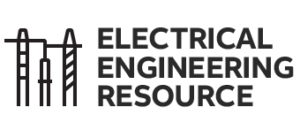UL product standards for switchboards and panelboards
For electrical OEMs, understanding UL 891 and UL 67 is vital for safe switchboard and panelboard designs. This article offers a practical overview of their differences and applications, focusing on compliance and innovation.
UL 891 and UL 67 are two essential UL Solutions (formerly Underwriters’ Laboratory) product standards for OEMs designing switchboards and panelboards for industrial use. Although these standards are different in scope and purpose, they can be complimentary or applied interchangeably depending on the application.
As an electrical OEM (eOEM) focused on producing reliable and safe electrical distribution equipment, it’s crucial to understand the framework of product standards that ensure product safety and performance. In this article, we discuss UL 891 and UL 67, highlighting why different standards are necessary and the key components of each.
The use case for switchboards vs panelboards
Panelboards and switchboards serve similar functions in an industrial setting but are designed for different use cases.
Switchboards are large, robust systems capable of handling higher power loads and may include features such as integrated meters and controls. Because of their complexity and capacity, switchboards are typically used for electrical systems where loads are varied and require higher management, making them suitable for larger industrial environments.
While switchboards are larger than panelboards, they are also free-standing units, providing greater placement flexibility in the industrial environment. Free-standing switchboards are particularly useful to facility managers and building owners because they are not constrained to a specific floor layout that wall-mounted panelboards may require.
Panelboards are typically smaller, wall-mounted units used to distribute power to various circuits. They usually operate at lower ampacities and are often used to control lighting and power circuits within a facility. Lighting panelboards allow for high circuit density across 1, 2, and 3-pole applications.
Overall, the choice between a switchboard and a panelboard in a facility largely depends on the scale of electrical management needed and the specific requirements for power distribution and control within the facility. A larger facility may use both, with switchboards serving as a centralized unit to manage the flow of electricity within the facility and panelboards used to distribute power to various circuits, such as lighting and specific machinery.
Two solutions. Two standards.
UL 891 and UL 67 share a focus on safety and performance, and both standards play an important role in industrial electrical distribution systems. The need for two standards is largely predicated on the equipment for which they are written.
UL 891 specifically covers dead-front switchboards, which are designed with no live parts exposed at the front, suitable for uses up to a maximum of 1,000 V, with the use of UL 489 circuit breakers or UL 1066 circuit breakers. The dead-front design provides a safer environment for employees and visitors as there are no exposed parts on the front of the switchboard.
Key elements of the UL 891 standard include:
- Construction: The standard specifies requirements for how switchboards must be constructed, including the space between components and the materials used to house and insulate the electrical parts.
- Safety: UL 891 outlines the necessary protection against arc flash hazards and short circuits, ensuring the switchboard can contain and redirect an electrical fault without causing damage or injury.
- Performance: Due to the higher power levels managed by switchboards, UL 891 includes more rigorous testing criteria to ensure they can handle severe short-circuit and ground-fault conditions. Testing under UL 891 includes dielectric withstanding, temperature rise, short-circuit, and ground fault, among other performance criteria.
- Accessibility: Under UL 891, switchboards must be designed with user safety in mind, including appropriate barriers and clearances for operator interaction. For example, the IP20 rating for electrical enclosures is an international standard that signifies a specific level of protection against solid objects. An enclosure with an IP20 rating is designed to prevent access to hazardous parts and to protect equipment inside the enclosure against objects larger than 12.5mm, such as fingers.
The UL 67 standard applies to panelboards. As noted above, panelboards are generally smaller than switchboards and used primarily in lower-ampacity applications. Panelboards distribute power through a series of overcurrent protection devices like circuit breakers. Key elements of the UL 67 standard include:
- Layout: UL 67 regulates the arrangement of overcurrent devices within a panelboard and the overall design to allow for efficient power distribution and ease of maintenance.
- Installation: Installation and environmental requirements under UL 67 ensure panelboards are placed and operated safely.
- Protection: UL 67 requires panelboards to be tested for their capacity to protect against electrical faults and to maintain structural integrity under adverse conditions. However, since panelboards are designed for lower-ampacity applications, the testing requirements are not as demanding as UL 891.
- Accessibility: UL 67 also requires panelboards to be designed with user safety as a priority but with considerations geared toward the environments where panelboards are more commonly installed.
The pros and cons of UL 891 Annex G
One additional UL 891 consideration eOEMs should be aware of is Annex G. Using UL 891 with Annex G allows approved manufacturers that custom build or mass produce electrical products to be UL-listed without submitting products for extensive testing. By eliminating testing requirements in Annex G, manufacturers can speed up the time to market and reduce development costs. Additionally, Annex G can allow manufacturers to make quick customizations as long as the changes comply with the Annex G guidelines.
However, there are some drawbacks to using UL 891 with Annex G. The specific requirements in Annex G may limit design flexibility because manufacturers must adhere to stringent material or component requirements to support the guidelines. This could increase the cost of manufacturing switchboards, which would override the cost-saving benefits associated with the “no-testing” requirements of Annex G.
On the other hand, using UL 891 without Annex G allows for greater design flexibility, enabling manufacturers to create custom switchboard designs that meet specific customer needs. However, this approach may require more extensive testing to ensure compliance with safety standards. While this can be time-consuming and costly, it ensures that the final product is safe and reliable, providing a sense of security and caution.
UL standards support innovation
As the electrical distribution industry undergoes rapid change driven by factors such as reliability concerns, increased reliance on renewables, and a heightened focus on safety, UL standards provide a clear framework for innovation. Working within these standards, developers like ABB and its OEM customers can help meet the needs of industrial users by incorporating innovations such as digital solutions to ensure safety, efficiency, and reliability. As the industry continues to evolve, UL and other product standards will continue to provide much-needed guardrails for innovation without hindering progress.
See related blog post “5 ways plug-in circuit breakers help eOEMs deliver cutting-edge data center solutions.”
—
Kim Fairley
OEM Marketing Manager
Thomas Chrysler
Product Marketing Manager – NEMA Smart Power products




